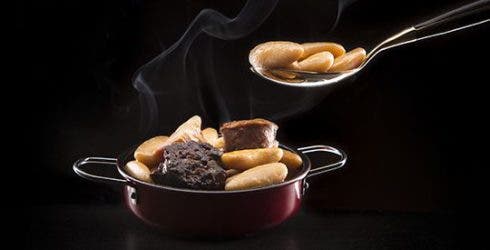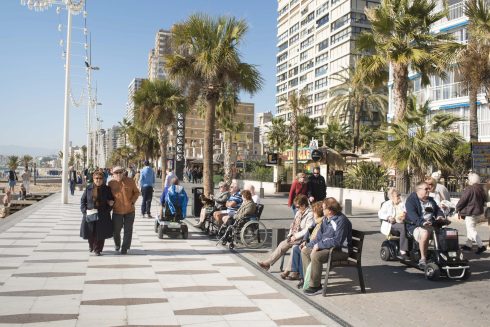THE Guardian has named this city in northern Spain the country’s new ‘foodie capital’.
A complex network of tunnels takes travellers from Madrid under the Cantabrian mountains, finally emerging into a food lover’s paradise.
The green area abundant in countryside attracts visitors seeking a cooler climate compared to the rest of sunny Spain.

Asturias has ‘long traditions in fishing, livestock and agriculture’ making its seafood, meat, beans, corn, milk and cider famed across Spain.’
At the epicentre is Oviedo, the region’s capital and Spain’s gastronomic lead for 2024.
Local dishes include cachopo (breaded veal stuffed with cheese and ham) and fabada (bean and pork stew).
As a small city, you can explore Oviedo on foot between stops in the traditional cake shops, trying moscovitas (crisp almond and chocolate wafers) and carbayones (glazed almond cream-filled pastries).

The Guardian recommends the ‘delectable’ bites at Rialto and Camilo de Blas.
These sweet treats should be washed down with the area’s star product, cider.
Asturias is home to over 70 cider mills and is the world’s largest producer of natural cider.
Much like the champagnes of France and the riojas of Spain, Asturias cider has protected denomination of origin status when made from any of the 76 approved varieties of apple.
The unusual cider drinking culture is also being considered for classification by Unesco as an example of intangible cultural heritage.
You will find sidrerias (cider bars) all over the city, especially on Calle Gascona, locally known as the ‘Cider Street’.
The British newspaper also recommends El Ferroviario, La Manzana and La Finca for ‘admiring the art’ of escanciar, the skill of pouring cider from a great height in order to produce a frothy, carbonated drink.

However, the area is not only known for its cider.
Asturias also has a rich wine tradition, which can be enjoyed at La Corte de Pelayo.
The restaurant offers expansive views over the Asturian parliament and Plaza de la Escandalera, as well as ‘traditional cuisine, thoughtful preparation and local produce’.
La Corte de Pelayo takes these comforting dishes and refines them with high quality ingredients.
The Guardian also recommended Gloria, a ‘smart dining house serving traditional dishes with modern flair’.
Headed by one of the region’s most sought after chefs, Nacho Manzano, the Asturian native is now the proud owner of three Michelin stars.
The most recent is for his Oviedo restaurant, NM.
READ MORE: Where you should visit in Spain and beyond in 2024 – according to your star sign
With just four tables, the restaurant offers an intimate but intense dining experience, with 11 courses ‘packed full of flavour and texture’.
For those longing for a rural escape, The Guardian recommends Casa Chema.
Surrounded by pastures, head chef Joaquina Rodriguez stirs a broth made of acorns.
Acorns are one of the region’s principal ingredients, also used to make tortos (crisp savoury cakes), served with slow-cooked pork ribs.
The restaurant is also home to the region’s best faba, a ‘plump, white bean’ often served in stews which should ‘melt when pushed into the roof of your mouth with your tongue’.

But this isn’t the region’s only famous stew.
If you’re ever sick of faba, try pote asturiano, a bean stew made with potato and cabbage.
Although this part of Spain is a ‘paradise’ for dairy lovers, with more than 40 varieties of regional cheese.
Known as ‘Spanish Switzerland’, there are specialty cheese shops throughout Oviedo such as Manduca Seleccion.
There, you can find Rey Silo, Teyedu, Lazana, Cabrales, and La Cueva de Llonin.
As well as its culinary delights, The Guardian recommends exploring the Asturian coastline with its unique and varied towns.
A train from Madrid to Oviedo typically costs around €79.80 return (Renfe) and has reasonable accommodation, with the Barcelo Oviedo Cervantes clocking in at €150 a night.
Click here to read more News from The Olive Press.








